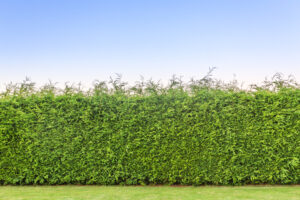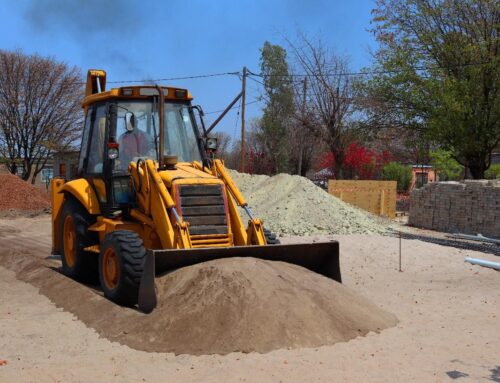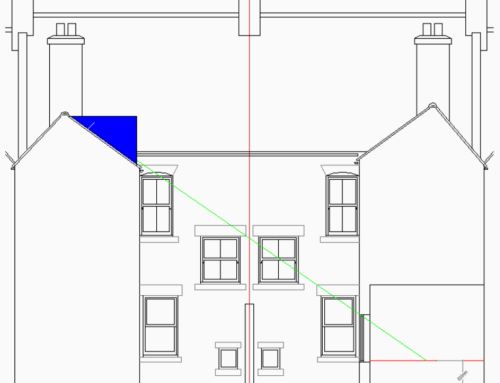We often get enquiries from people who are concerned about the loss of light to their windows due to a neighbour’s tree or trees having become such a size that they are having an impact on the light in their home.
Can you ask your neighbour to cut their trees back?
Many people think that there surely must be a means of making the owners of the tree or trees cut them back, but it is not always straightforward when it comes to trees.
Achieving your legal right to light
Owners of property can, in certain instances, have legal ‘rights to light’. This covers the issue of light receivable through defined glazed apertures, usually windows and doors.
The most common way for homeowners to acquire this legal right is to enjoy the light continuously and uninterrupted for a period of 20 years. When we say uninterrupted, we mean the glazed aperture must remain present and in use for 20 years; drawing curtains or blinds each day is not classed as a means of preventing the enjoyment of light for the 20 years acquisition period.
Making the most of your legal right to light
After a house has acquired this legal right, the owners of this property can seek to protect their light from being diminished to a certain level due to an obstruction caused by another party, such as a neighbour. To do this, a claim must be raised and progressed within 12 months of the obstruction. If the affected party pursues no matter within the 12 months, the right to the former amount of light is lost, and no claim can be made.
Proving obstruction to your right of light
When neighbours erect new buildings, extensions, solid walls or fences, the assessment is relatively straightforward. The obstruction often appears rather quickly and is usually of a fixed mass. The impact of these structures can be measured accurately, and claims can be pursued accordingly if sufficient loss can be proven. In such situations, a neighbour can quantify and pursue a claim within the 12 months and therefore protect the acquired level of light.
How trees can obstruct light
Under ‘The Prescription Act’, the right to light is gained once light through a window has been enjoyed continuously for 20 years. With trees, the loss to a neighbour’s window is not immediate; the tree grows each hour of each day, year on year. There is always an ongoing element of increasing interruption to the light enjoyed by the neighbour to the tree. Therefore the windows cannot ever fully enjoy the light they had 20 years ago due to the daily subtle but diminishing light experienced as the tree grows.
For this reason, trees that grow over a long period cause very few actionable legal rights to light issues.
What about larger trees?
There are occasions where some tree trunks become so large that the trunk position and diameter can be measured and modelled to assess how much light loss the tree trunk causes. Whilst enforcement of a reduction in the tree trunk size is usually not possible as the tree will have already interrupted the neighbour’s light for the previous 12 months, it would be possible to determine how much light the neighbour’s room has at the assessment data.
Poor Light levels to begin with
If it was established that your room was poorly lit with the tree in place, then what you would have, is, in effect, a room that would by case law standards be deemed to already be inadequate. This is where the room cannot see 0.2% of the sky dome between 50% and 55% of its room area, at tabletop height. If a room is inadequately lit, any further loss of sky view will naturally worsen a poorly lit room. Such losses are often considered more significant because the poor light, to begin with, is deemed more precious due to its low starting levels.
So, if assessing a large tree or trees proves your room is inadequately lit, then further growth of the trees, as measured beyond the assessment date, will demonstrate additional loss, proving a worsening condition and hence a potential legal injury.
Even with this, your only option would be to go to Court to pursue an injunction to enforce the neighbour to reduce their tree back to the size it was at the assessment date.
Planting large ‘Instant Trees’ and your right to light
Over the last few years, there has been a growing trend for architectural landscaping to provide immediate impact, with the provision of very mature trees and plants, often in the form of ‘pleached trees’ or architectural box hornbeam plants used.

Such plants appear immediately, and as such, there is no continual growth experienced that can diminish the neighbours light day by day. Thus, interruption to an established right to light (20 years uninterrupted light) can occur.
We have had a few cases recently where this has happened, and installed pleached trees were almost the equivalent of a building due to their instant, solid impact. The normal means of assessing a legal right to matter can be followed in such situations. The obstruction caused by an architectural ‘instant’ tree must cause the light in the neighbouring room to reduce to less than 50% to 55% of its area, unable to see 0.2% of the sky dome.
If you are thinking of such types of instant landscaping, you should seek advice beforehand to ensure your neighbours light (if they have a legal right to light) is not affected.
High Hedges on right to light
Other options could be to pursue a claim against the neighbour who owns trees under what is commonly referred to as the High Hedges Act. This is for cases pursued under the Anti-Social Behaviour Act 2003.

In this legislation, a high hedge means ‘so much of a barrier to light or access as:
- (a) is formed wholly or predominantly by a line of two or more evergreens; and
- (b) rises to a height of more than two metres above ground level.’
Consequently, these guidelines apply to evergreen hedges or trees. They have not been designed to be applied to individual trees, groups of trees or woodlands.
This course of action is usually via the Local Authority, which can undertake assessments to calculate what is known as the Action Hedge Height.
Contact us
Please contact us if you would like to speak to our team to discuss a right to light issue or would like us to carry out a right to light assessment.
Related Articles
Extraordinary Rights Of Light…Such As A Greenhouse
What About My Shed…Can That Have A Right To Light?
8 Top Right To Light Misconceptions






